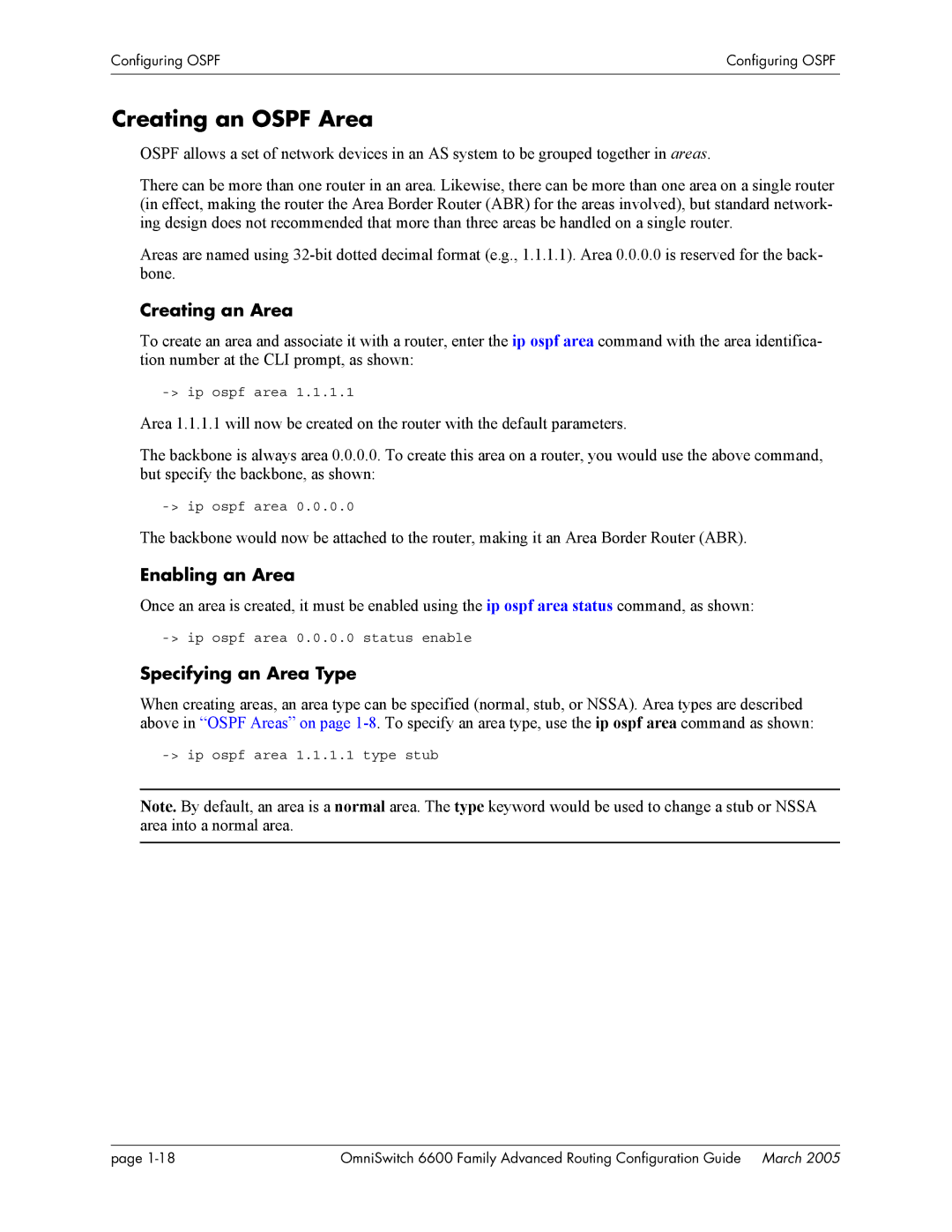
Configuring OSPF | Configuring OSPF |
|
|
|
|
Creating an OSPF Area
OSPF allows a set of network devices in an AS system to be grouped together in areas.
There can be more than one router in an area. Likewise, there can be more than one area on a single router (in effect, making the router the Area Border Router (ABR) for the areas involved), but standard network- ing design does not recommended that more than three areas be handled on a single router.
Areas are named using
Creating an Area
To create an area and associate it with a router, enter the ip ospf area command with the area identifica- tion number at the CLI prompt, as shown:
Area 1.1.1.1 will now be created on the router with the default parameters.
The backbone is always area 0.0.0.0. To create this area on a router, you would use the above command, but specify the backbone, as shown:
The backbone would now be attached to the router, making it an Area Border Router (ABR).
Enabling an Area
Once an area is created, it must be enabled using the ip ospf area status command, as shown:
Specifying an Area Type
When creating areas, an area type can be specified (normal, stub, or NSSA). Area types are described above in “OSPF Areas” on page
-> ip ospf area 1.1.1.1 type stub
Note. By default, an area is a normal area. The type keyword would be used to change a stub or NSSA area into a normal area.
page | OmniSwitch 6600 Family Advanced Routing Configuration Guide March 2005 |
